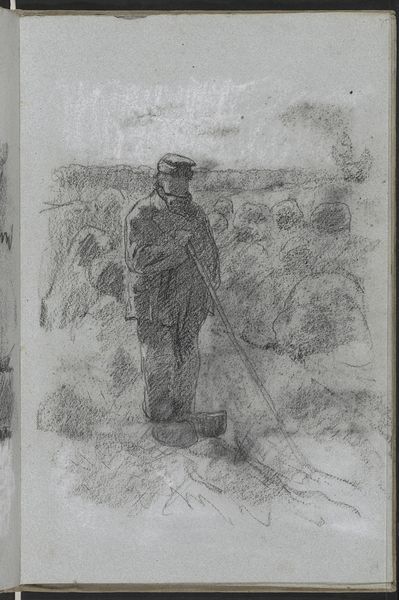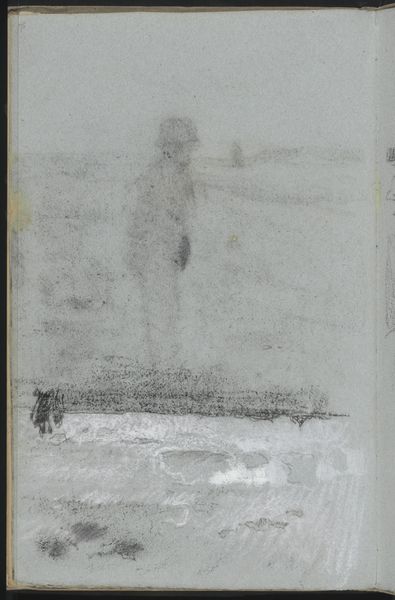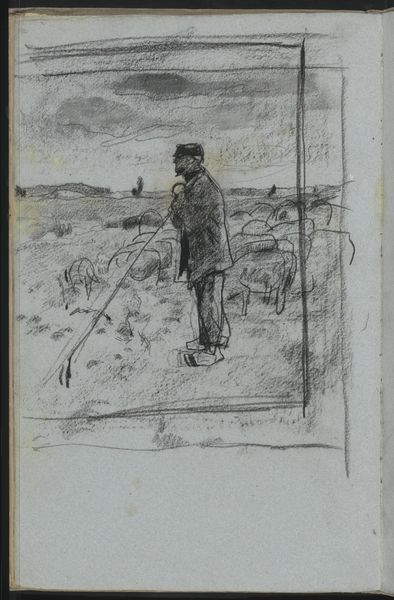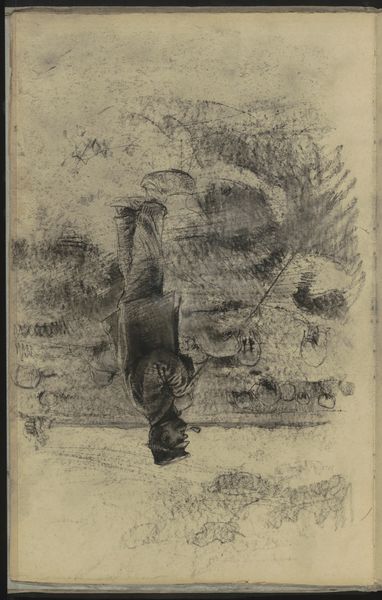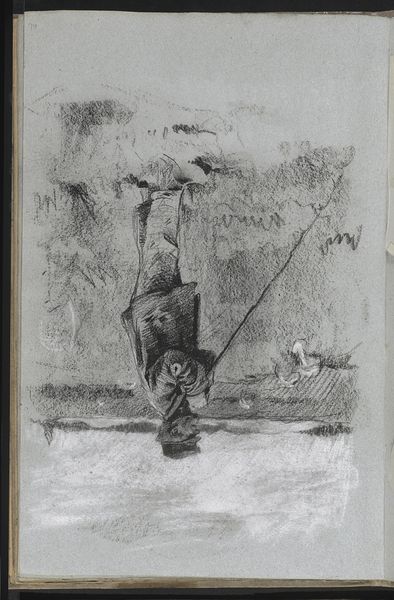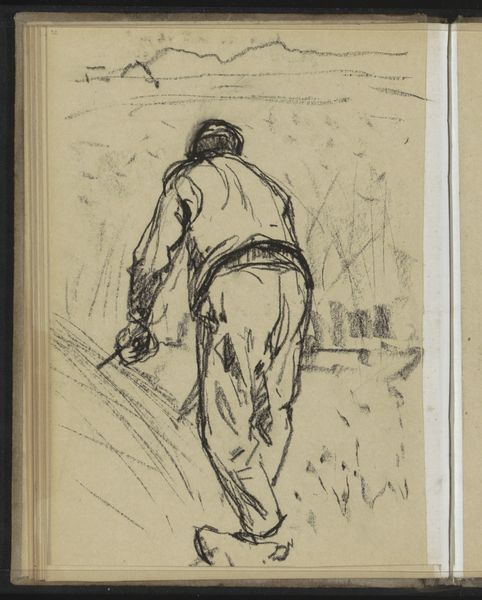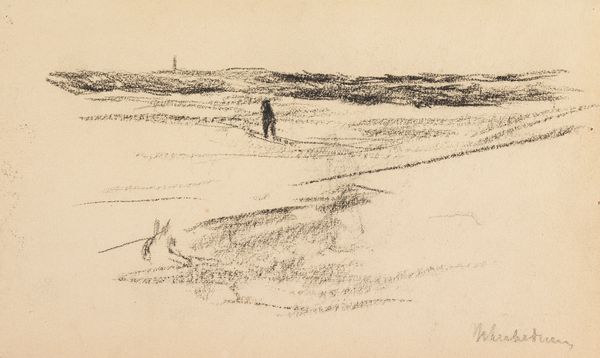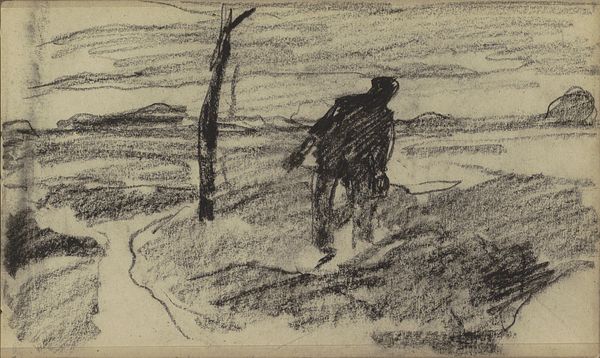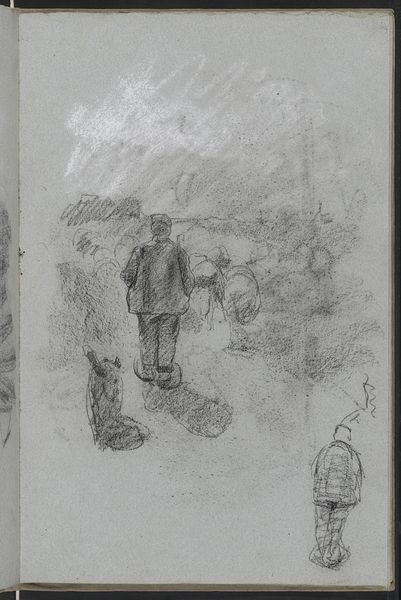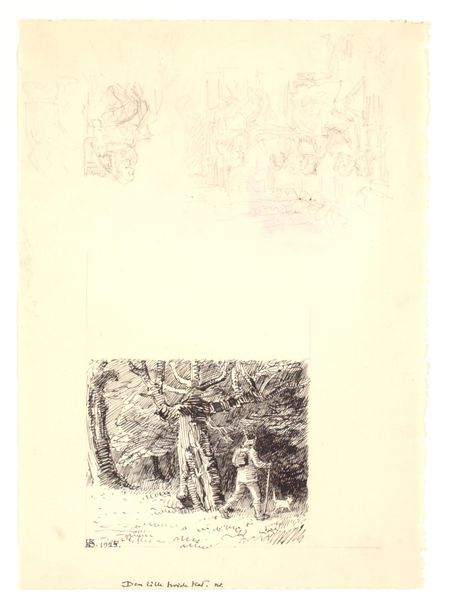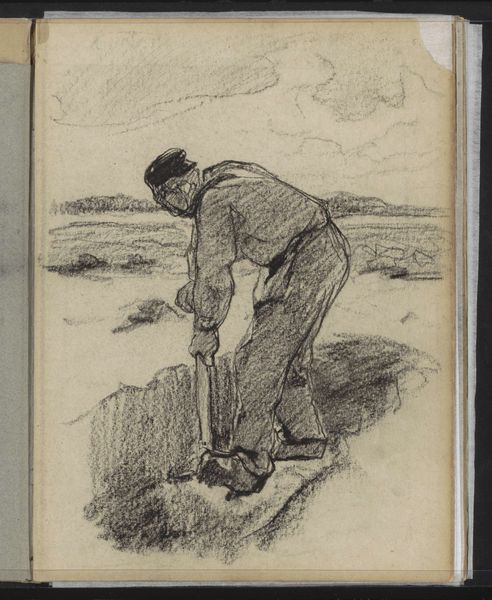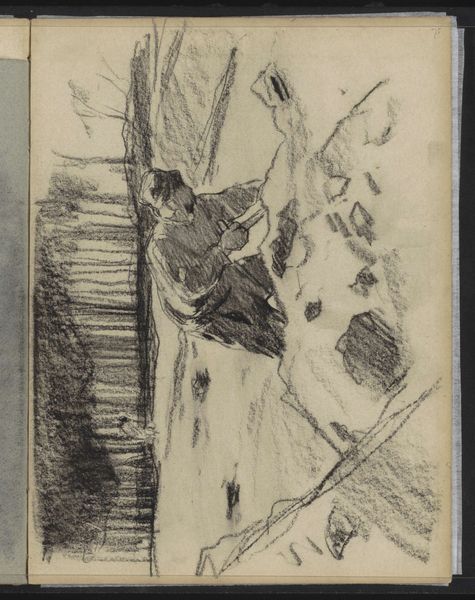
Copyright: Rijks Museum: Open Domain
Editor: Here we have Willem Witsen’s “Standing Man in a Landscape,” dating from around 1884 to 1887. It looks like a charcoal drawing, very understated. I'm immediately drawn to how solitary the figure appears. What's your interpretation of this piece? Curator: I see this work as deeply rooted in its socio-political context. Consider the time: the late 19th century, a period marked by rapid industrialization and urbanization. Witsen, along with other artists, was part of a movement that sought refuge in the quietude of the landscape, idealizing the pastoral as a response to the discontents of modernity. But who is this figure, and what does it mean for him to simply be standing? Is he observing the landscape, or disconnected from it? What societal expectations would the "standing man" be faced with during the rapid industrialisation of the late 19th Century? Editor: That's fascinating! I hadn’t thought about it as a form of resistance. So the solitary figure could represent someone left behind by progress? Curator: Exactly. And it raises questions about the dominant narratives of progress and who benefits from them. Are there echoes of earlier romantic visions of man and nature present? How might class intersect with this reading? Could his very act of "standing" be a quiet form of protest? What if the figure is in between places, caught in shifting identity and location, a representation of something in transition? Editor: I see how framing it through that lens opens up a richer discussion about the social issues of the time. Curator: It challenges us to think about art as more than just aesthetic representation, but as a form of social commentary, embedded in a web of power relations. This type of figure is visible throughout all of art history, representing many diverse intersections, always a reflection of its current period. Editor: I’ve definitely gained a deeper understanding. Thanks, that really changed my perspective. Curator: My pleasure, questioning our assumptions can unlock such surprising connections!
Comments
No comments
Be the first to comment and join the conversation on the ultimate creative platform.
